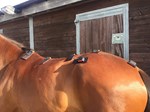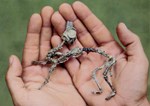Search - All Results
81 - 90 of 394 results
-
Frequently Asked Questions
-
RVC researchers involved in identifying potential malignant ovine theileriosis vaccine antigens
RVC researchers Dr Shan Goh, Daniel Ngugi, Prof Dirk Werling and the late Prof Declan McKeever were part of an international team developing vaccines for Theileria lestoquardi, an important parasite causing disease in sheep. The project was funded …RVC researchers Dr Shan Goh, Daniel Ngugi, Prof Dirk Werling and the late Prof Declan McKeever were …
-
Clinical Connections - Summer 2017
Royal Veterinary College (RVC) Clinical Services newsletter featuring an article on the successful treatment of headshaking using PENS. -
RVC Secure Portal
We have launched a new secure portal as part of the new working from home IT service which offers improved accessibility to RVC resources For Students: https://hhrdweb.rvc.ac.uk/ For Staff: https://rdweb.rvc.ac.uk/ Enter your RVC email … -
Postgraduate Master's Loan
If your postgraduate course starts on or after 1 August 2023, you can borrow up to £12,167. The total amount borrowed will be paid evenly over the length of their course. Applications can now be made online through Gov.uk/postgraduateloan. -
Benefits and Reward
RVC employees receive a number of benefits, including the opportunity to work in a creative, dynamic and exciting environment -
Publications
Explore the collection of authored works including articles, chapters, and books written by our dedicated veterinary nursing teams and talented students. Click to view RVC VN publications Submit Publications → -
Sensor technology allows experts to enhance understanding of the relationship between lameness and back problems in horses
Sensor technology is allowing experts from the RVC and Animal Health Trust to enhance their understanding of the relationship between lameness and back problems in horses -
Early Jurassic dinosaur shifted from four legs to two legs as it grew up
Scientists have discovered that an early species of dinosaur, Mussaurus patagonicus, could only move on four limbs once born but switched to two legs as it grew up, just as humans do.



